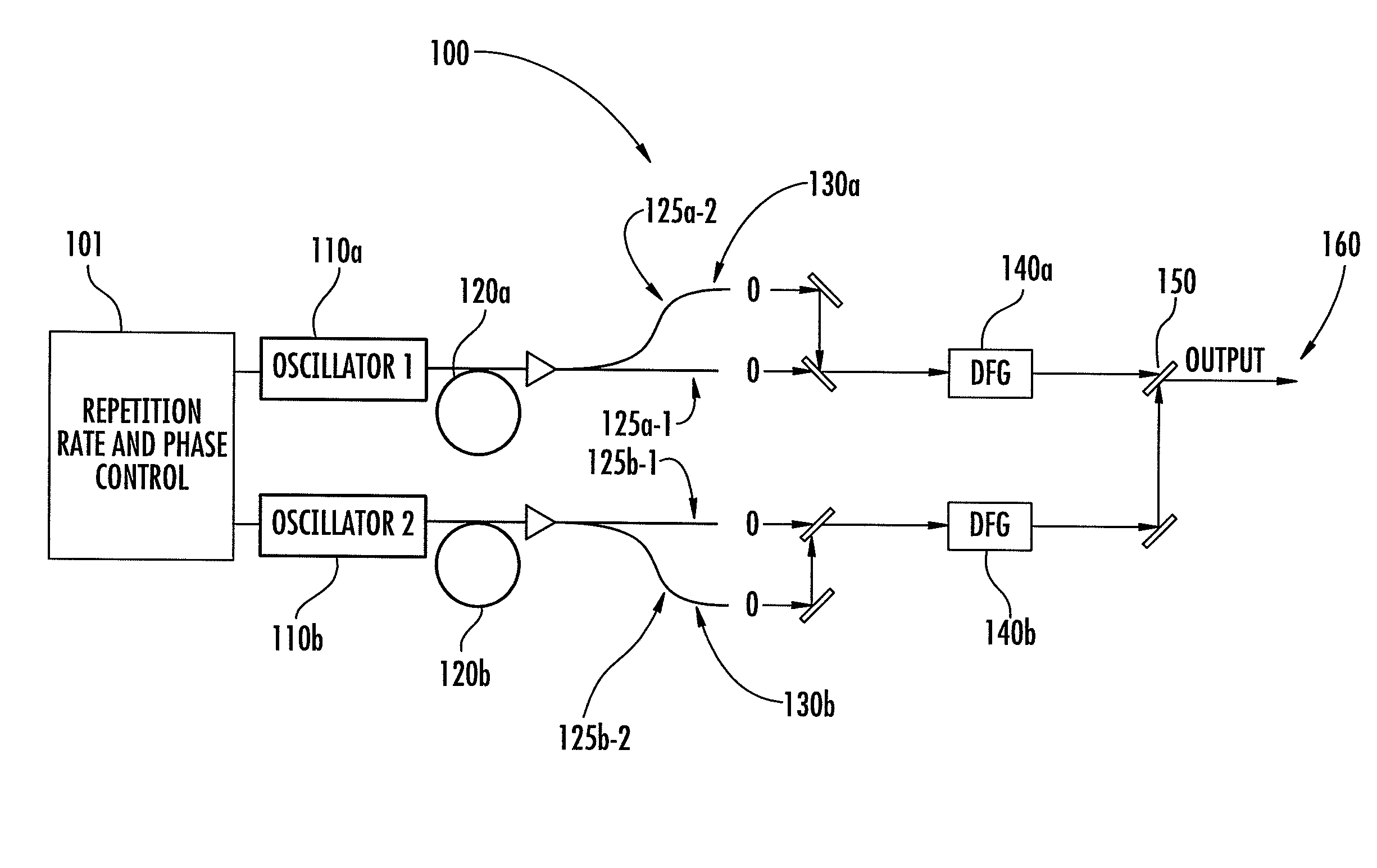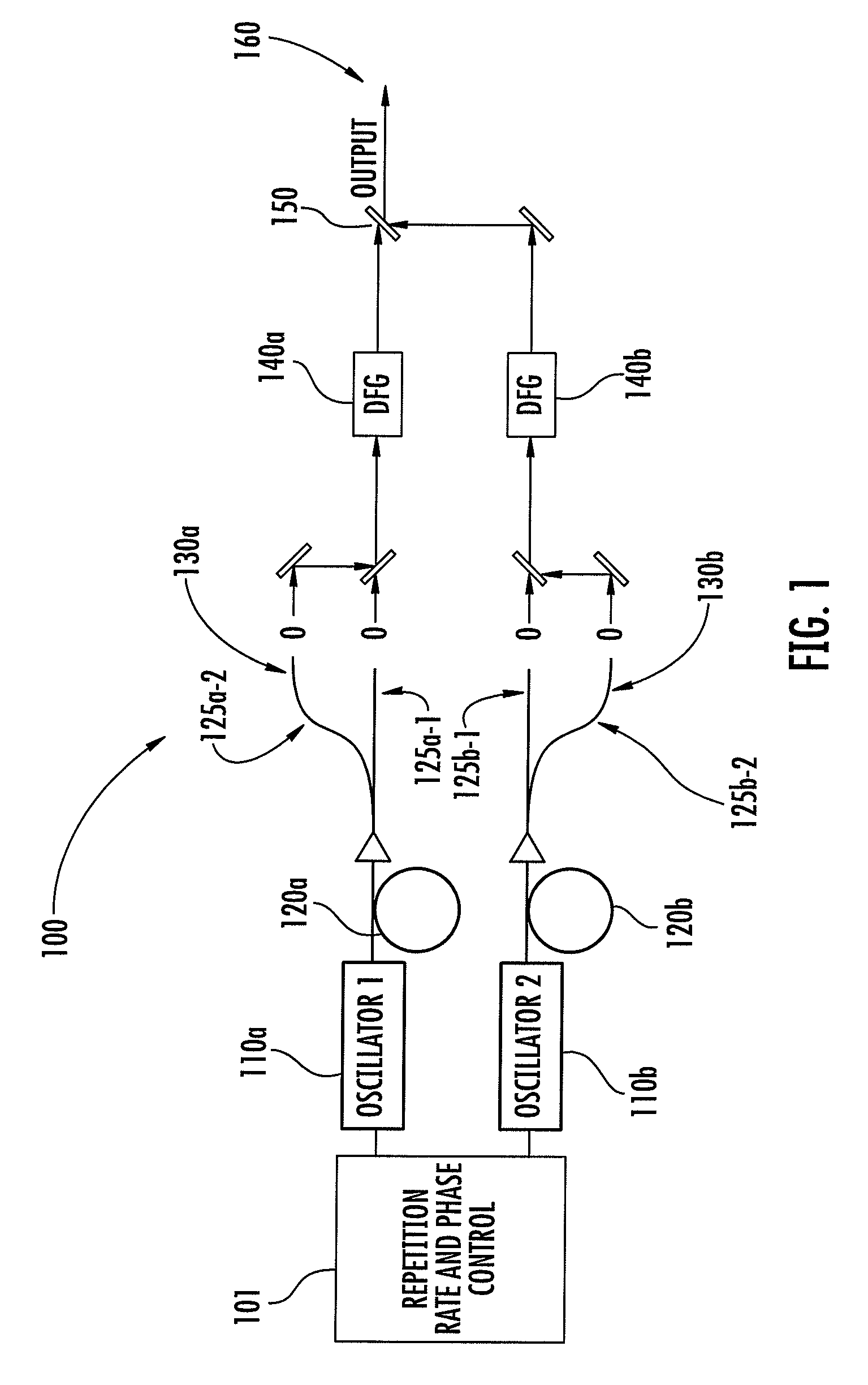Optical scanning and imaging systems based on dual pulsed laser systems
a laser system and scanning laser technology, applied in the field of scanning pulsed laser systems, can solve the problems of excessive data acquisition time, unsatisfactory, and prior dual scanning laser systems have a number of limitations when applied to spectroscopy, and achieve the effect of minimizing the noise of the carrier envelope offset frequency
- Summary
- Abstract
- Description
- Claims
- Application Information
AI Technical Summary
Benefits of technology
Problems solved by technology
Method used
Image
Examples
Embodiment Construction
[0038]This description first discusses some aspects of mode-locked lasers and frequency comb generation particularly related to CDSL and applications thereof. Examples of applications of such lasers for IR spectroscopy and THz imaging are included.
[0039]Modelocked lasers with fixed optical frequency spectra comprising a set of equidistant optical frequency lines are typically also referred to as frequency comb lasers. The optical frequency spectrum of a frequency comb laser can be described by S(f)=fceo+mfrep, where m is an integer, fceo is the carrier envelope offset frequency and frep is the repetition rate of the laser. The amplitudes of the individual frequency lines in fact sample the optical envelope spectrum at discrete points fceo+mfrep in optical frequency space.
[0040]Frequency comb lasers were described in U.S. Pat. No. 6,785,303 to Holzwarth et al., where the control of the pump power of a modelocked laser in conjunction with electronic feedback loops is used to stabilize...
PUM
 Login to View More
Login to View More Abstract
Description
Claims
Application Information
 Login to View More
Login to View More - R&D
- Intellectual Property
- Life Sciences
- Materials
- Tech Scout
- Unparalleled Data Quality
- Higher Quality Content
- 60% Fewer Hallucinations
Browse by: Latest US Patents, China's latest patents, Technical Efficacy Thesaurus, Application Domain, Technology Topic, Popular Technical Reports.
© 2025 PatSnap. All rights reserved.Legal|Privacy policy|Modern Slavery Act Transparency Statement|Sitemap|About US| Contact US: help@patsnap.com



